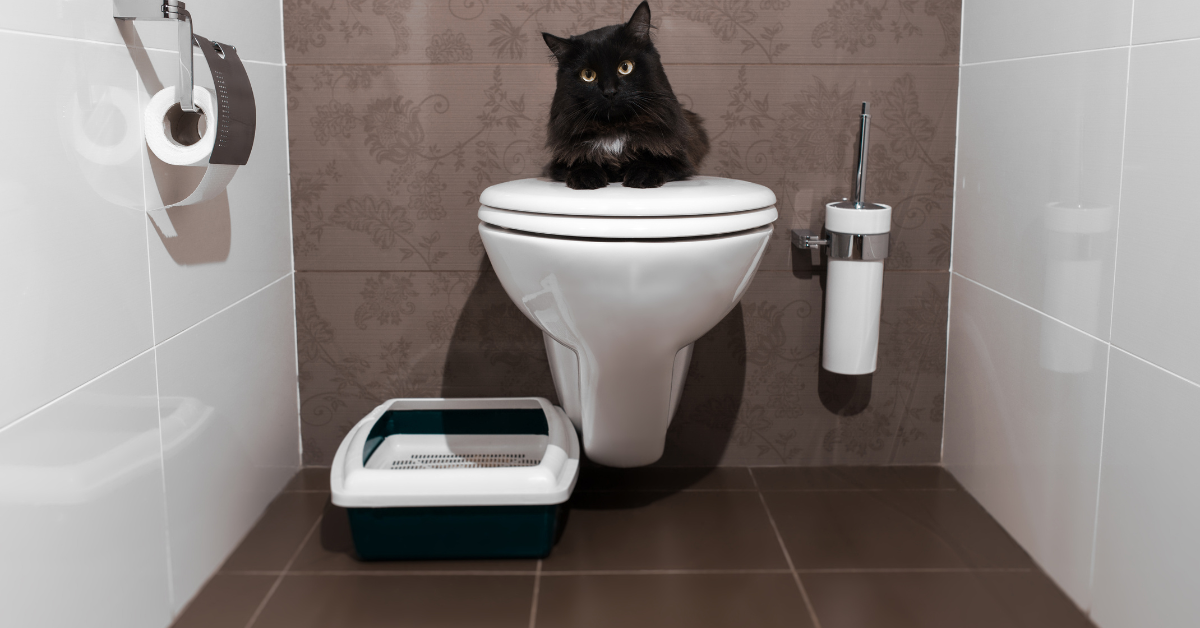What're your thoughts with regards to Don’t flush cat feces down the toilet?

Intro
As feline owners, it's necessary to be mindful of how we deal with our feline pals' waste. While it might seem convenient to flush pet cat poop down the bathroom, this method can have damaging repercussions for both the environment and human wellness.
Alternatives to Flushing
Luckily, there are much safer and more accountable methods to deal with pet cat poop. Think about the following choices:
1. Scoop and Dispose in Trash
The most common approach of getting rid of pet cat poop is to scoop it into an eco-friendly bag and throw it in the garbage. Be sure to utilize a committed litter inside story and deal with the waste immediately.
2. Usage Biodegradable Litter
Choose naturally degradable pet cat trash made from products such as corn or wheat. These clutters are eco-friendly and can be safely gotten rid of in the garbage.
3. Hide in the Yard
If you have a yard, think about burying feline waste in an assigned location far from veggie yards and water resources. Make certain to dig deep adequate to stop contamination of groundwater.
4. Mount a Pet Waste Disposal System
Buy a pet waste disposal system specifically made for pet cat waste. These systems make use of enzymes to break down the waste, minimizing smell and ecological impact.
Health Risks
Along with ecological issues, purging cat waste can additionally present health threats to people. Cat feces might include Toxoplasma gondii, a bloodsucker that can create toxoplasmosis-- a possibly severe ailment, particularly for expecting women and people with weakened immune systems.
Ecological Impact
Flushing feline poop introduces dangerous pathogens and parasites right into the supply of water, presenting a considerable threat to aquatic ecological communities. These contaminants can negatively affect marine life and compromise water high quality.
Verdict
Responsible animal ownership prolongs beyond providing food and shelter-- it likewise includes appropriate waste monitoring. By avoiding flushing cat poop down the toilet and opting for alternative disposal methods, we can minimize our environmental footprint and safeguard human health and wellness.
Why Can’t I Flush Cat Poop?
It Spreads a Parasite
Cats are frequently infected with a parasite called toxoplasma gondii. The parasite causes an infection called toxoplasmosis. It is usually harmless to cats. The parasite only uses cat poop as a host for its eggs. Otherwise, the cat’s immune system usually keeps the infection at low enough levels to maintain its own health. But it does not stop the develop of eggs. These eggs are tiny and surprisingly tough. They may survive for a year before they begin to grow. But that’s the problem.
Our wastewater system is not designed to deal with toxoplasmosis eggs. Instead, most eggs will flush from your toilet into sewers and wastewater management plants. After the sewage is treated for many other harmful things in it, it is typically released into local rivers, lakes, or oceans. Here, the toxoplasmosis eggs can find new hosts, including starfish, crabs, otters, and many other wildlife. For many, this is a significant risk to their health. Toxoplasmosis can also end up infecting water sources that are important for agriculture, which means our deer, pigs, and sheep can get infected too.
Is There Risk to Humans?
There can be a risk to human life from flushing cat poop down the toilet. If you do so, the parasites from your cat’s poop can end up in shellfish, game animals, or livestock. If this meat is then served raw or undercooked, the people who eat it can get sick.
In fact, according to the CDC, 40 million people in the United States are infected with toxoplasma gondii. They get it from exposure to infected seafood, or from some kind of cat poop contamination, like drinking from a stream that is contaminated or touching anything that has come into contact with cat poop. That includes just cleaning a cat litter box.
Most people who get infected with these parasites will not develop any symptoms. However, for pregnant women or for those with compromised immune systems, the parasite can cause severe health problems.
How to Handle Cat Poop
The best way to handle cat poop is actually to clean the box more often. The eggs that the parasite sheds will not become active until one to five days after the cat poops. That means that if you clean daily, you’re much less likely to come into direct contact with infectious eggs.
That said, always dispose of cat poop in the garbage and not down the toilet. Wash your hands before and after you clean the litter box, and bring the bag of poop right outside to your garbage bins.
https://trenchlesssolutionsusa.com/why-cant-i-flush-cat-poop/

Do you appreciate more info about How to Dispose of Cat Poop and Litter Without Plastic Bags? Try to leave a review down the page. We would be delighted to listen to your opinions about this review. We hope that you visit us again before long. Loved our piece? Please share it. Help others discover it. We truly appreciate reading our article about Can You Flush Cat Poop Down The Toilet?.
Browse Website